This season, the Estadio Benito Villamarín in Sevilla is worth a visit despite Real Betis‘ inconsistent form costing them the chance to push on from their qualification for the Europa League last season. In this weeks’ La Liga game against Valencia, 42,508 spectators saw a great clash with two highly competitive and tactically strong teams. This tactical analysis will show both sides’ tactical approaches and explain how Valencia were able to defeat Real Betis away from home.
Lineups
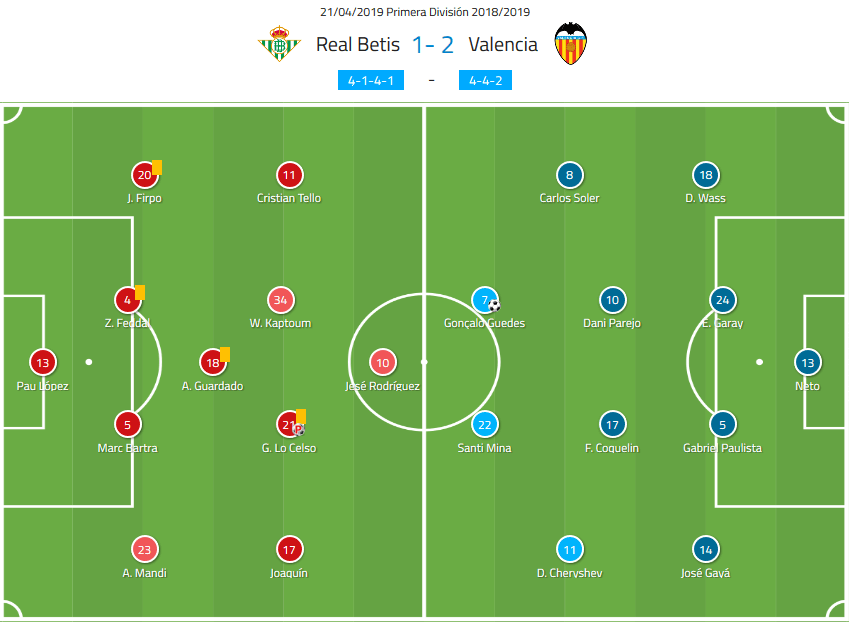
Concerning the line-ups, both coaches started as expected. Quique Setién used a 4-1-4-1 formation, which could also be interpreted as a 4-3-3 system. Since William Carvalho was missing due to an injury, Wilfried Kaptoum made his fourth La Liga appearance. Valencia coach Marcelino on the other hand used his preferred 4-4-2 system with Gonçalo Guedes and Santi Mina up-front.
Tactical approaches
Using statistics, we can easily see that Real Betis were once again the proactive side with much more possession than their opponents (66% to 34%). Throughout the season, we saw that this is part of the philosophy of Setién. Valencia on the other hand adapted to the situation and focused on counter-attacks.
If we look at the passing figures, there is an interesting finding underlining this. While Real Betis played 683 short and 34 long passes, Valencia only played 315 short passes, but 53 long passes. This means that Real Betis played 20 times more short passes than long passes, while that ratio for Valencia is only 6:1. Proportionally, Valencia played a lot more long passes than Real Betis.
Betis strong in possession
Therefore, we start the analysis with the possession game of Betis, as this made up the larger part of the game.
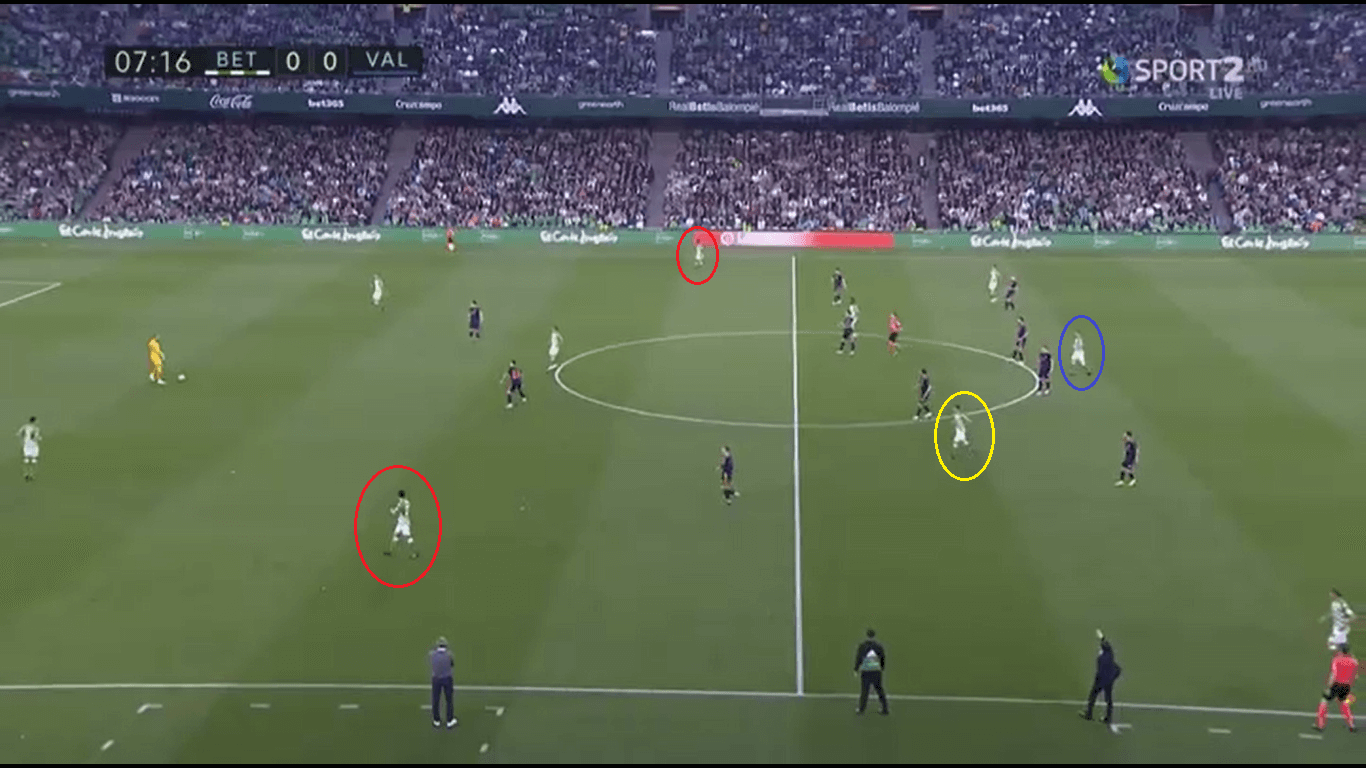
This image is a great example for the principle Real Betis use. First of all, we see that goalkeeper Pau López has the ball and takes an active part in the build-up. Circled in red, we see the full-backs occupying different heights. The purpose of this positioning is to stretch the opponent’s midfield line. We see that right back Aissa Mandi stays a bit deeper and thus forces the left winger of Valencia, Denis Cheryshev, out of the midfield line.
The player circled in yellow, Giovani Lo Celso, exploits the open space behind Cheryshev, but also tries to stay near the opponent’s left back José Gayá in order to pin him back. Therefore, Gayá has to keep an eye on Lo Celso as well as the right winger Joaquín, who stays extremely wide making the task extremely difficult. In the left half-space, we see that left central midfielder Wilfried Kaptoum doesn’t position as well as his teammate Lo Celso though.
Finally, circled in blue, we see Jesé. He also stays between two defenders in order to pin them and create assignment problems. Furthermore, staying offside is also a tactical idea, as the defenders can’t see him behind them. He can move behind them and as soon as the opportunity presents itself, he’ll go onside again.
Valencia on the other hand focused on staying compact and closing the space as quickly as possible.
Valencia defend tight
For Valencia, the main focus was on closing the centre and staying compact.
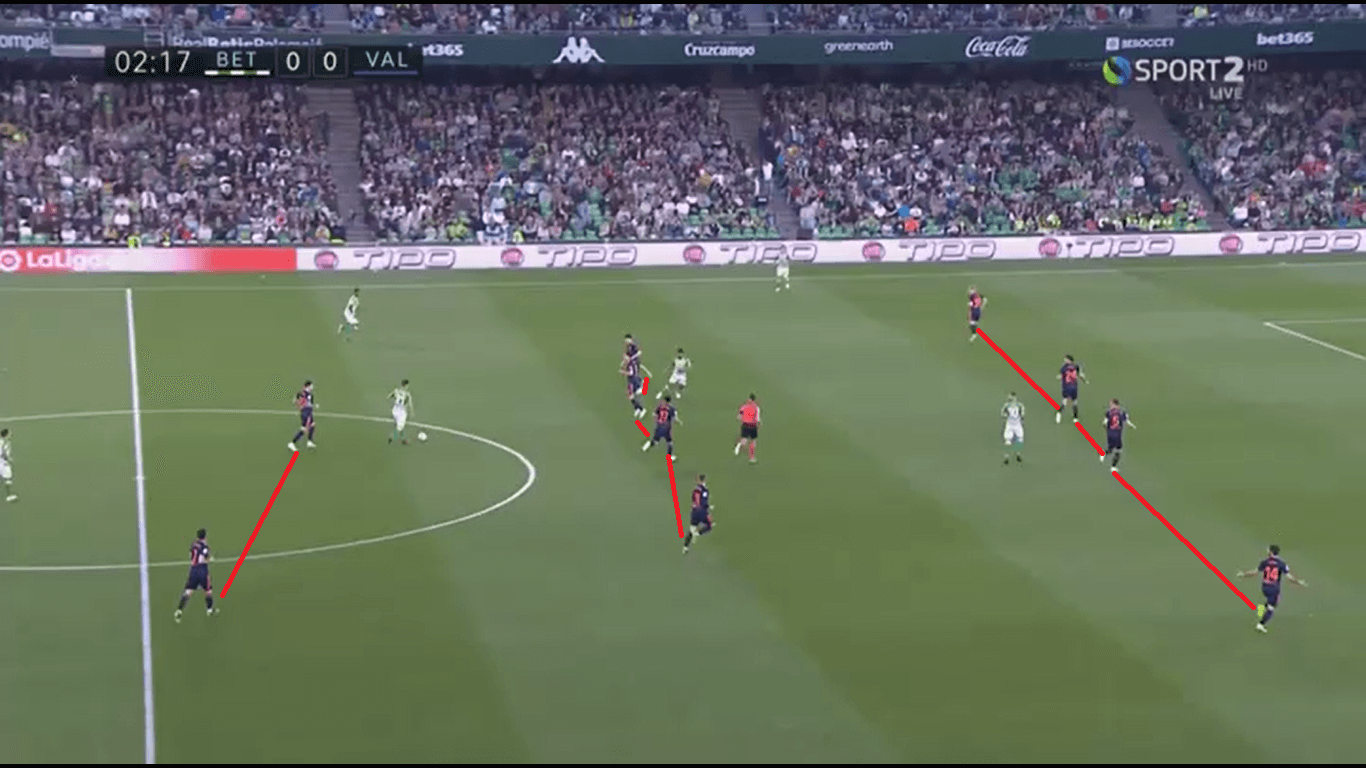
Here, we see a situation where the three defensive lines of Valencia close the centre. The midfield line especially provides an extreme execution of this plan, as the four of them are almost not even in the half space, but completely in the centre with a total distance of 15 yards between the two wingers. However, we see that they lack vertical compactness in this situation, meaning that the distance between the lines is too much.
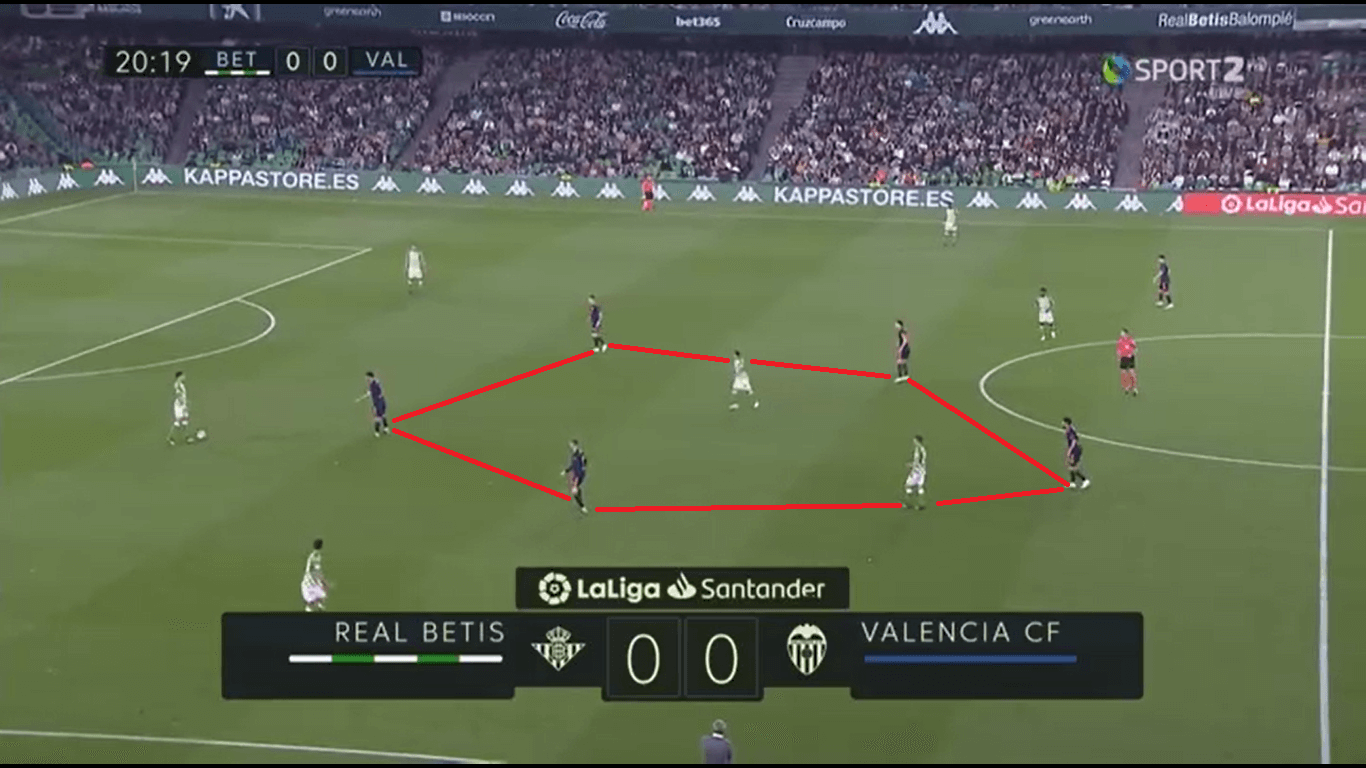
Even when Valencia pressed, which they did occasionally, we could see that they focused on closing the centre. Often enough, Real Betis had to play around the formation, which made it difficult to break through.
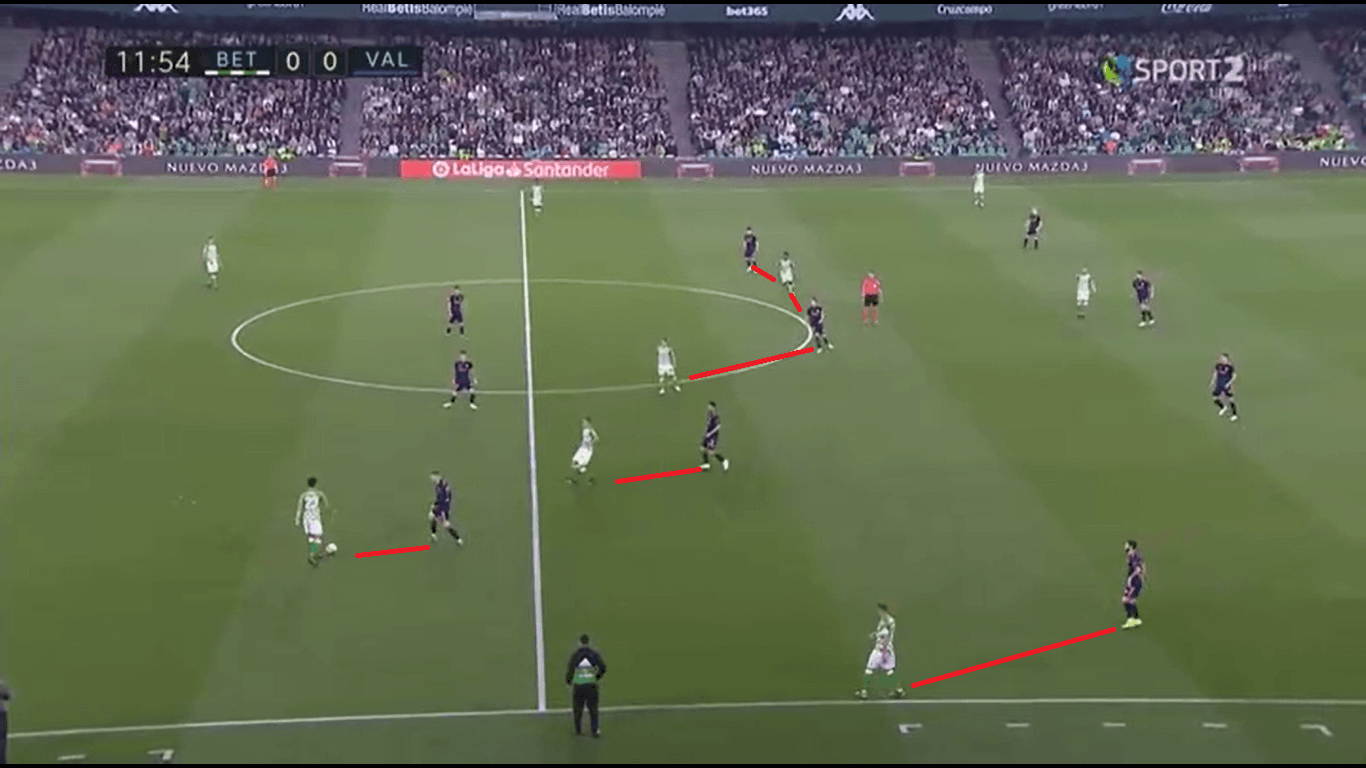
As soon as Real Betis played the ball to the wing in order to play around the formation, the nearest players of each defensive line would move out. Cheryshev in particular did this aggressively, being on the same line as the forwards in this image. Also, the central midfielders and left back Gayá shift aggressively to the wing and close all passing options. Mandi only has the option to play back to the goalkeeper. Scenes like this happened quite a lot during the game, which can be seen as a success for Valencia.
Real Betis not at the highest level in the final third
Creating scoring opportunities proved to be difficult for Real Betis.
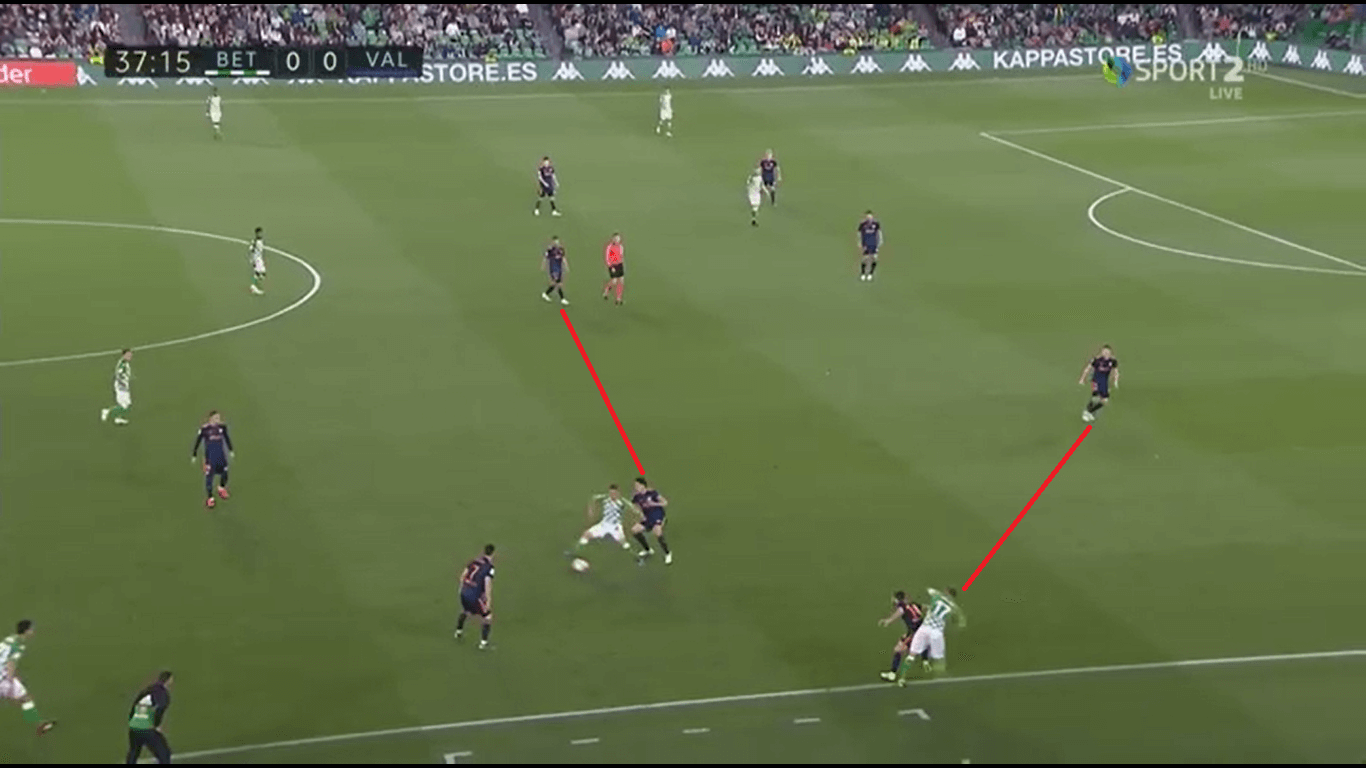
Here, we see once again a scene where Valencia shift aggressively to the wing. The red lines show us that the distances between these players were rather high. These are the areas that need to be occupied in order to exploit the weaknesses. If the other defenders decreased the distances, switching wings would then be the way to go.
But Real Betis didn’t move into these open spaces. They wanted to maintain their stable possession game and wanted their players in other places where they could provide good connections, like Kaptoum in this image.
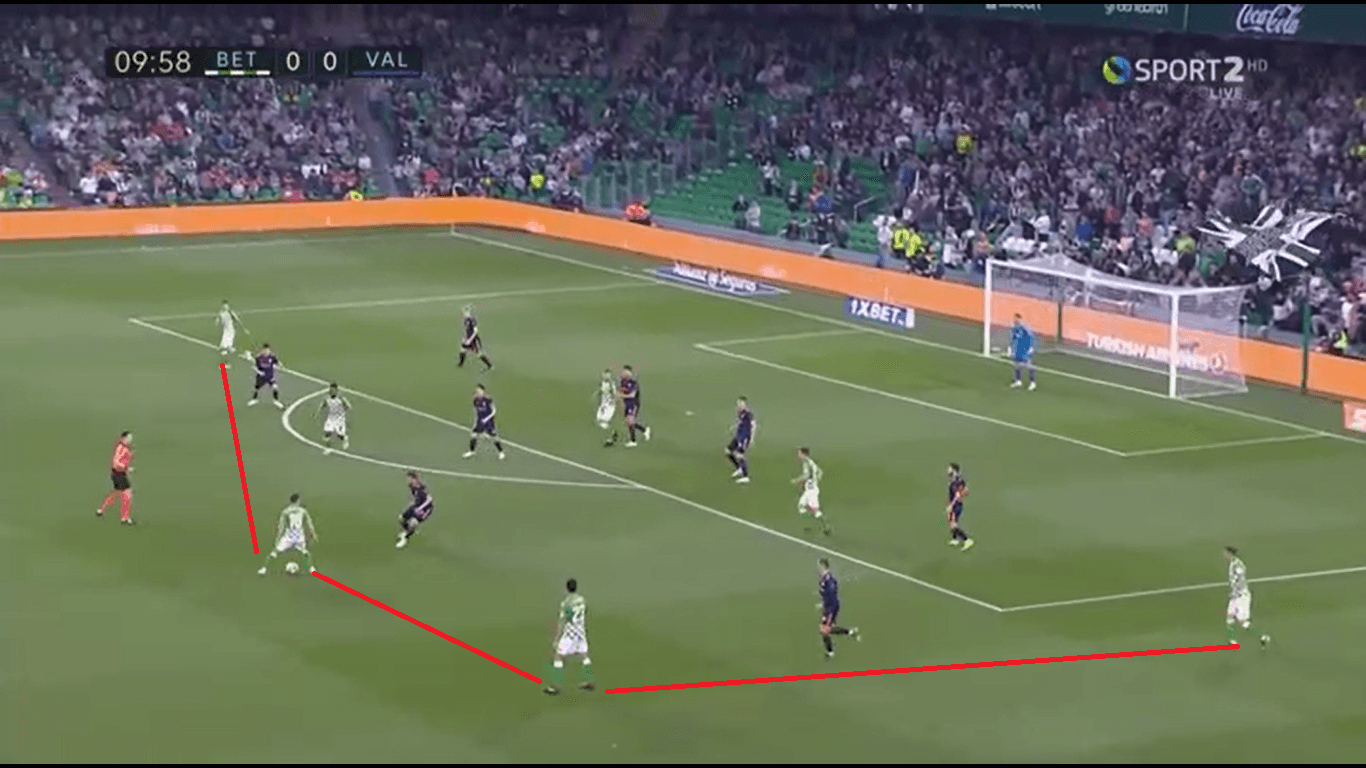
Near the box, Real Betis had good positioning. They were able to move the ball as if they played handball. Also, they occupied the box. But as we can see in this image, Valencia built two tight defensive blocks, which made it almost impossible to break through. In these situations, Real Betis lacked the absolute elite quality of those special players who can beat such a defence.
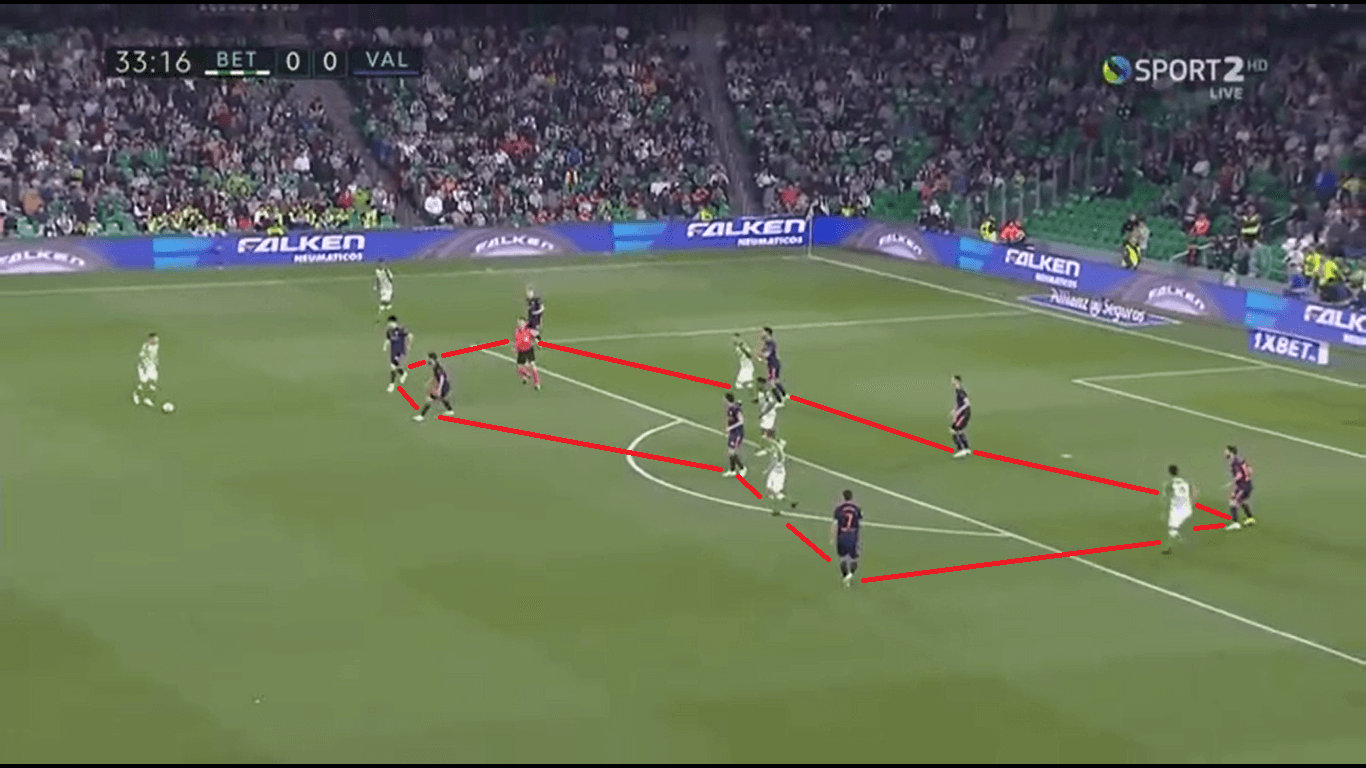
There were also situations like this one, where Real Betis were impatient and then lacked connections to move the ball. The two defensive blocks of Valencia create a net here, where three players are entangled.
Valencia’s disappointing possession game
Defensively, Valencia were great. When they had possession, things were different though as they failed to capitalise.
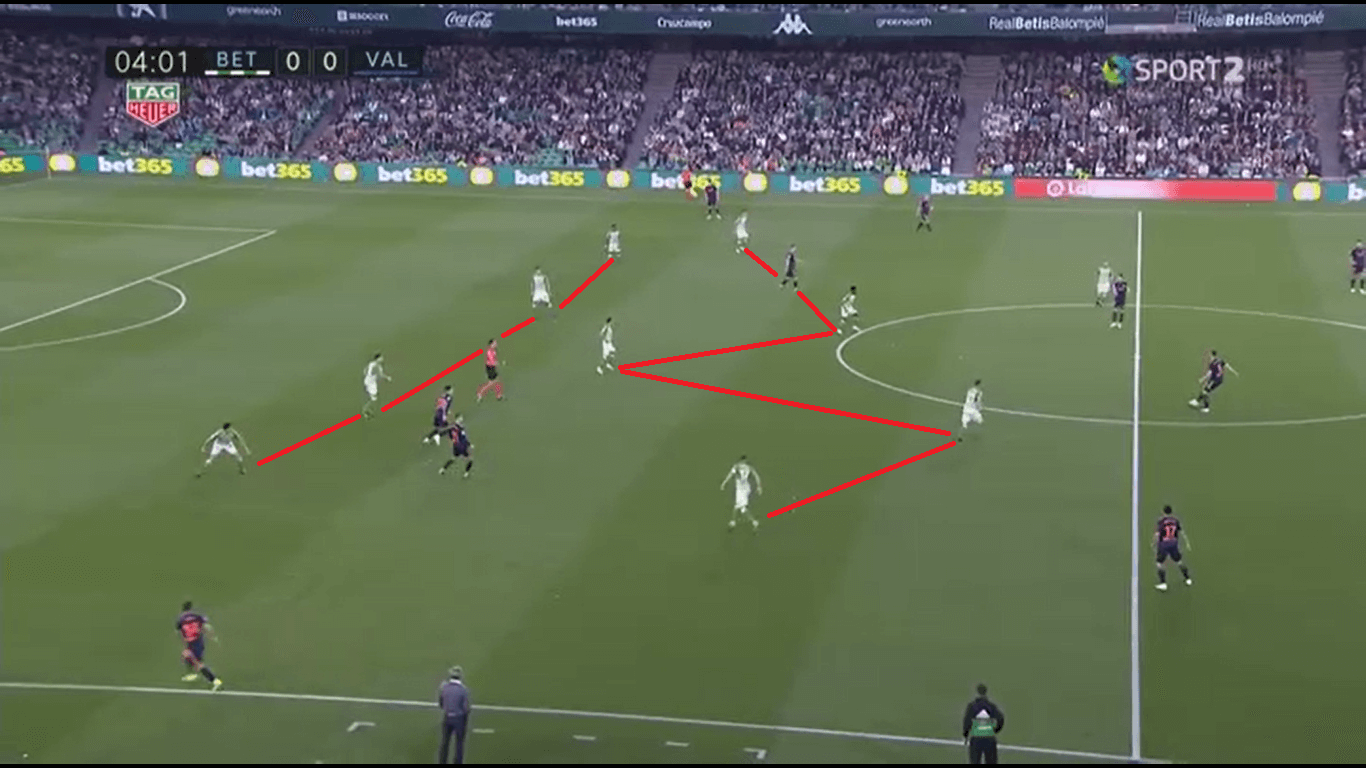
Real Betis defended in their 4-1-4-1 formation, which helped them to defend a lot of space thanks to the staggered midfield. As we can see, Valencia aren’t positioned well. While the right half-space is nicely occupied, two players in the left half space aren’t playable. The two players on the right wing are too close to stretch the defence, while the wingers occupy the same height. All in all, there are a lot of possibilities for improvement.
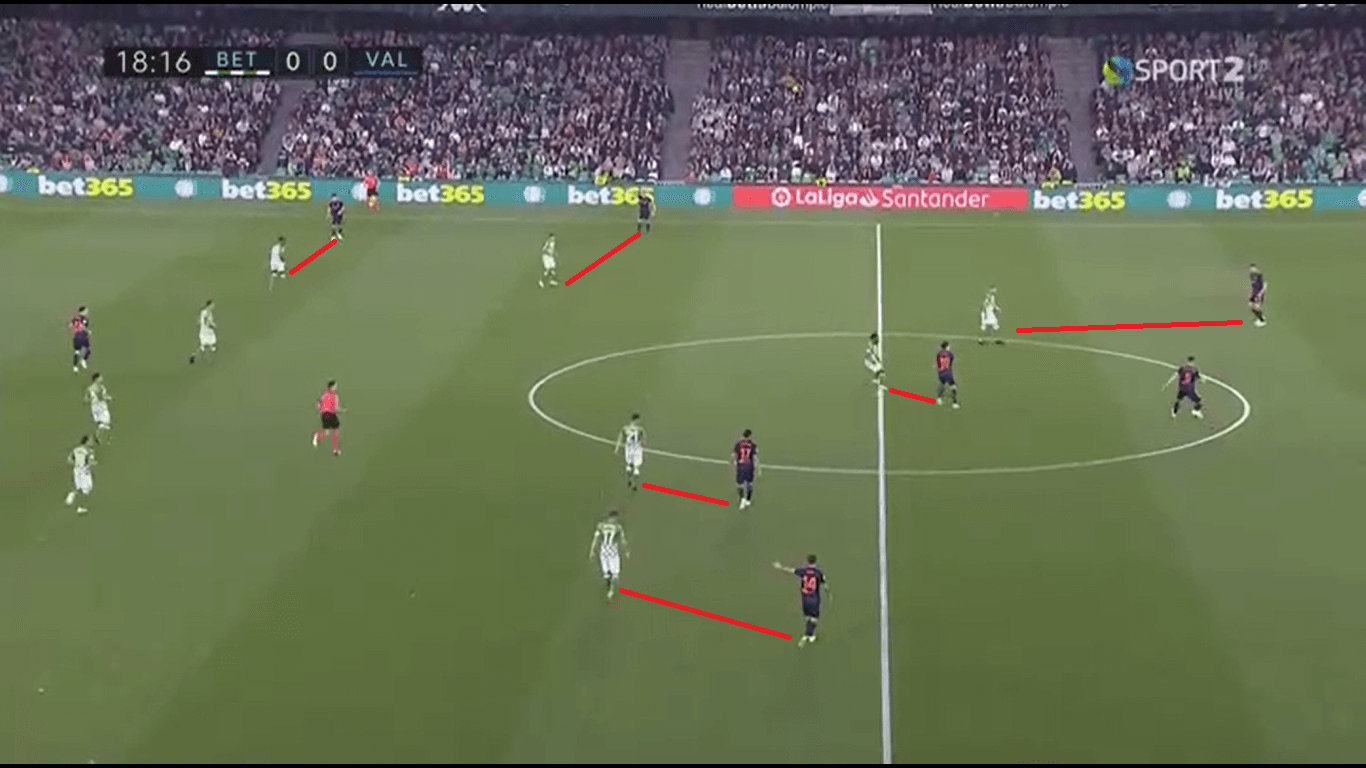
Furthermore, when Valencia had the ball, Real Betis were eager to win it back rapidly. Here, we see that the midfielders move forward aggressively to put pressure on the ball. Real Betis don’t have vertical compactness either, as there is a lot of space behind the midfield line. But Valencia are poorly positioned and can’t exploit the open space.
Counter-attacks & set pieces enough to win the game
Therefore, it was no wonder that a counter-attack would be necessary to score.

Right before the half-time whistle, such a situation arose. Guedes on the left wing received the ball and was able to score from this counter-attack, breaking forwards with pace as Real Betis were slow to track back.
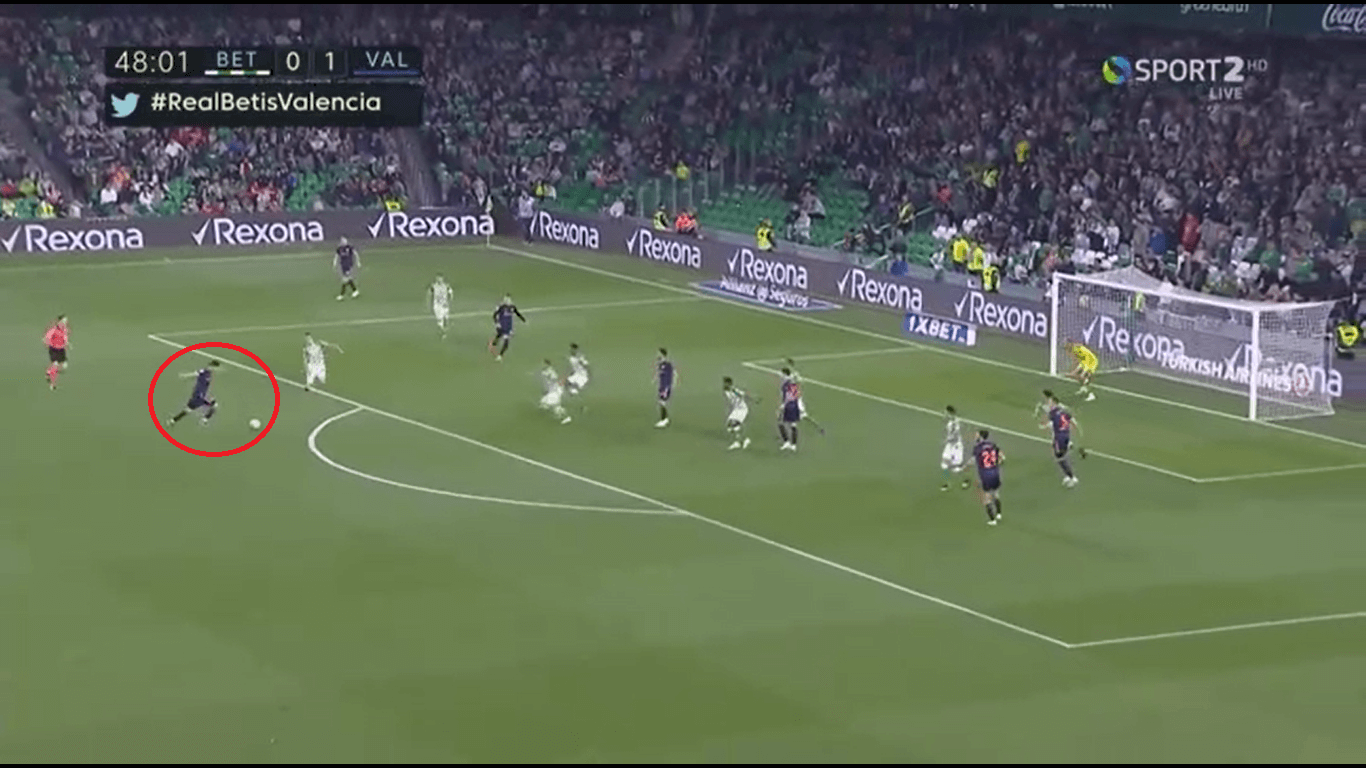
Only three minutes into the second half, Guedes found himself in a great shooting position after a short corner kick. He was able to score once again and out of nowhere, the score was suddenly 2-0 in favour of Valencia.
Real Betis reacted to this with a substitution. Right back Mandi left the pitch for Loren Morón, who played as a forward, so the formation was changed to a 3-5-2.

Interestingly, there was a sequence between the 72nd and 76th minute, where Valencia controlled the ball and had their longest phase of possession in this game, as can be seen in the image above. Real Betis were quite passive in that phase and weren’t able to win the ball back.
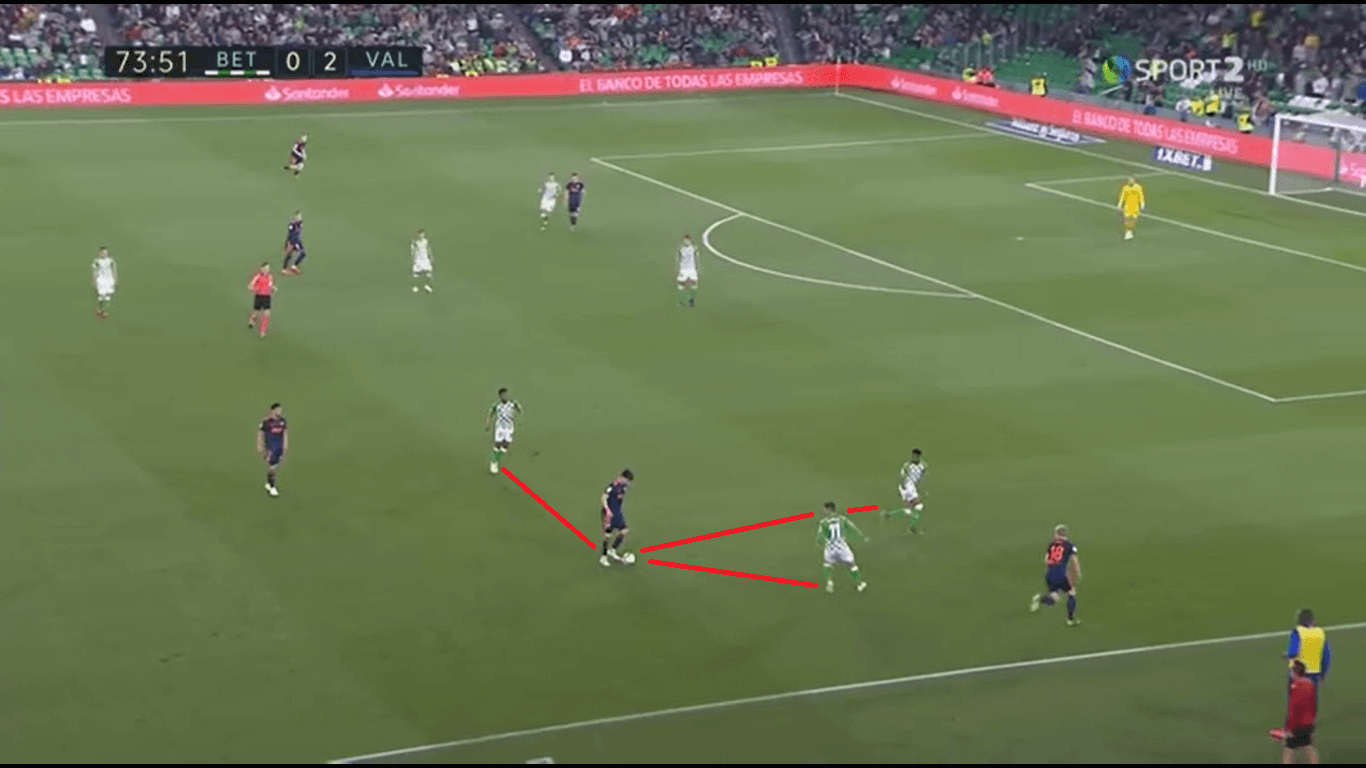
This image shows a scene where Carlos Soler has all the time in the world and three defenders don’t attack him properly. He can easily play the ball into the open space behind the backline to Daniel Wass. It wasn’t a phase where Valencia would use the possession as a defensive measure to take a breath. They could actually use it to attack.
Strangely, this phase ended with Real Betis winning the ball, crossing it from the right wing and being awarded a penalty as the defender used his hand, with Lo Celso converting. Rodrigo Moreno, who was subbed on, then received a second yellow card in the 82nd minute.
In the final minutes, Real Betis tried everything they could to equalise. They focused on crosses, which doesn’t fit within their usual style, but it is a common approach towards the end of a game. In total, 12 of their 27 crosses in this game belong to that period in the final 10 minutes.
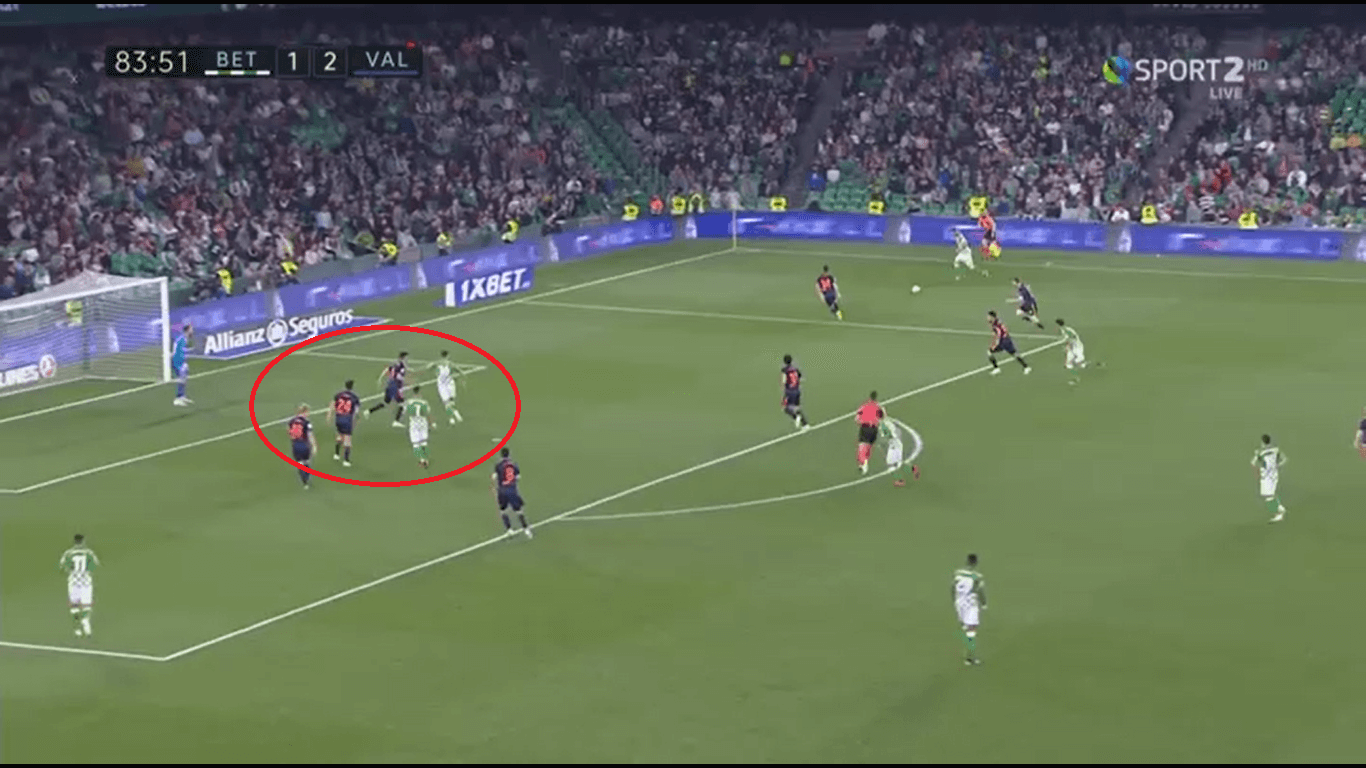
They weren’t always able to flood the box with enough players to create a real danger though, meaning that the crosses often just led to needless possession losses without the tools to add an end product to these deliveries from out wide. In the end, Valencia were able to hold the scoreline.
Conclusion
A highly interesting game found a rather lucky winner. Valencia weren’t the better side, but they were more effective. The figures suggest that they only had four shots and scored twice. Even though Valencia’s possession game wasn’t strong, their defensive organisation was. Real Betis on the other hand couldn’t convert their strong possession game into three points.
After 33 games, Valencia still have a shot at a Champions league spot, as fourth-placed Getafe are only two points away. Real Betis remain ninth and don’t have any valid ambitions, but nonetheless remain an interesting team to watch tactically, even if Setién is facing critics as his team lack the cutting edge to progress.
If you love tactical analysis, then you’ll love the digital magazines from totalfootballanalysis.com – a guaranteed 100+ pages of pure tactical analysis covering topics from the Premier League, Serie A, La Liga, Bundesliga and many, many more. Buy your copy of the April issue for just ₤4.99 here, or even better sign up for a ₤50 annual membership (12 monthly issues plus the annual review) right here.

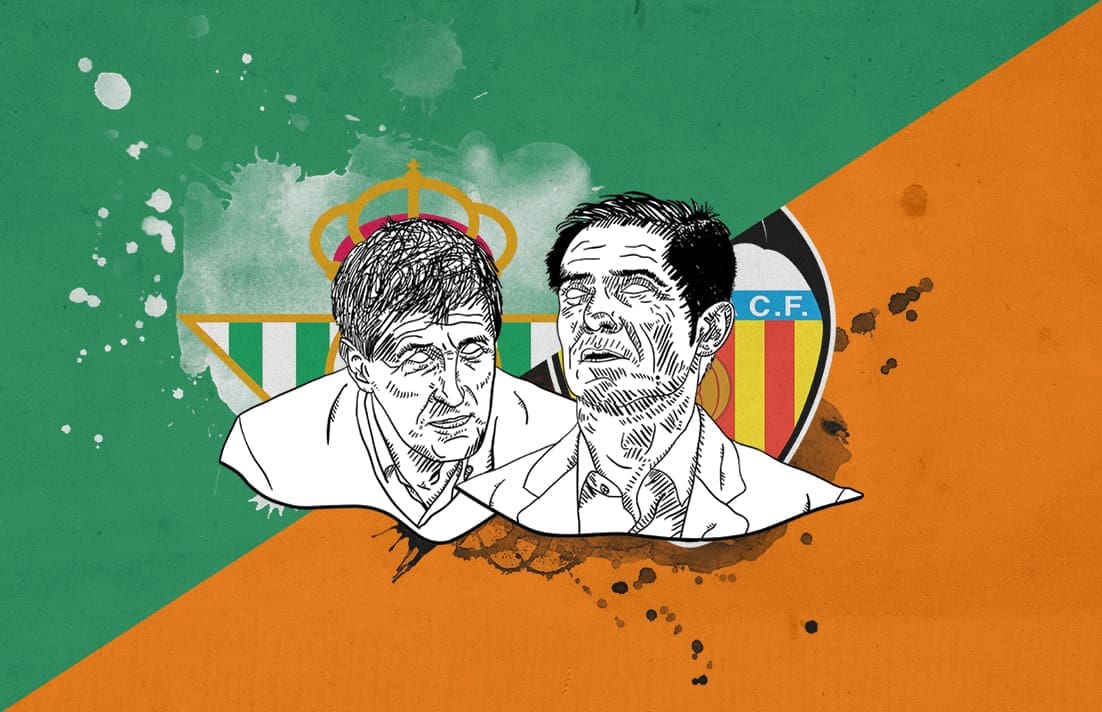
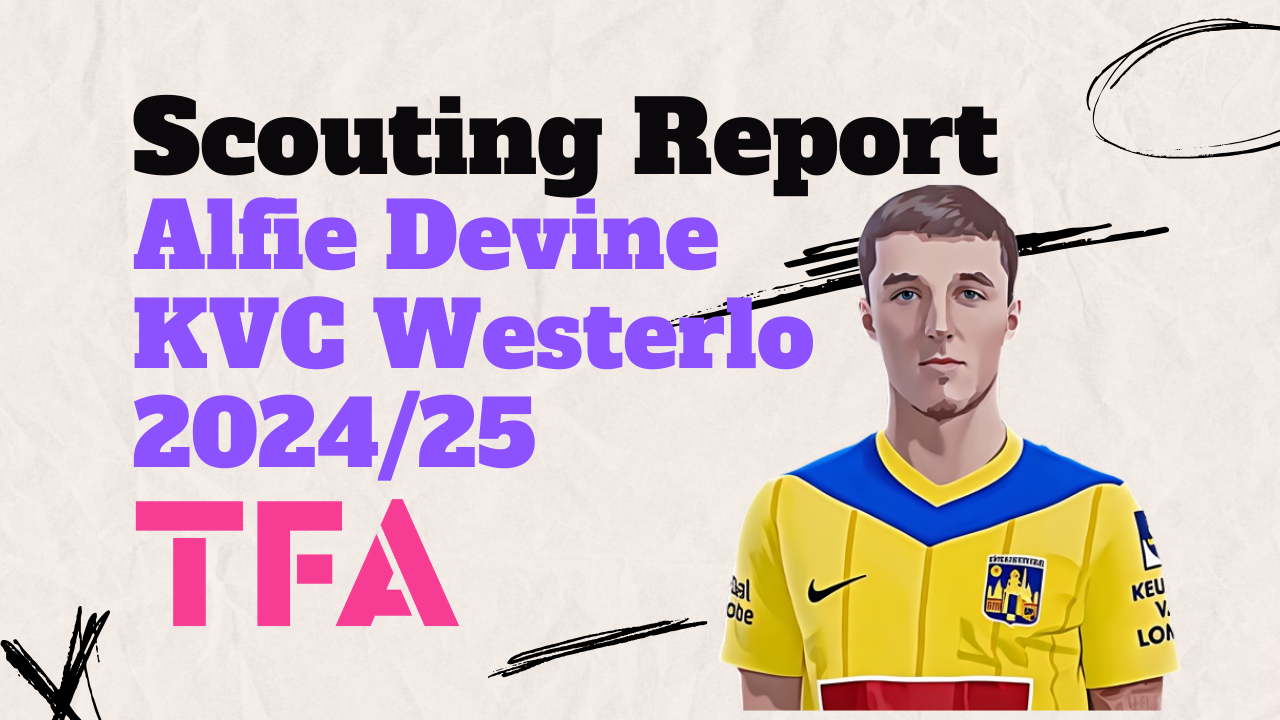
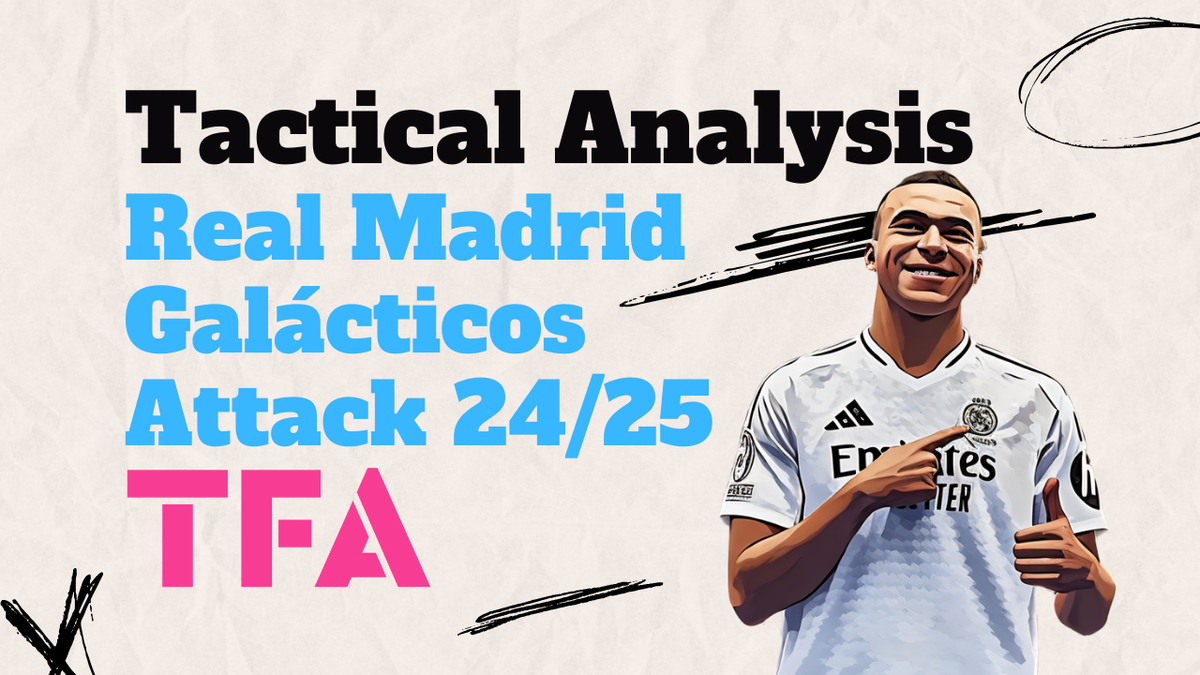
Comments